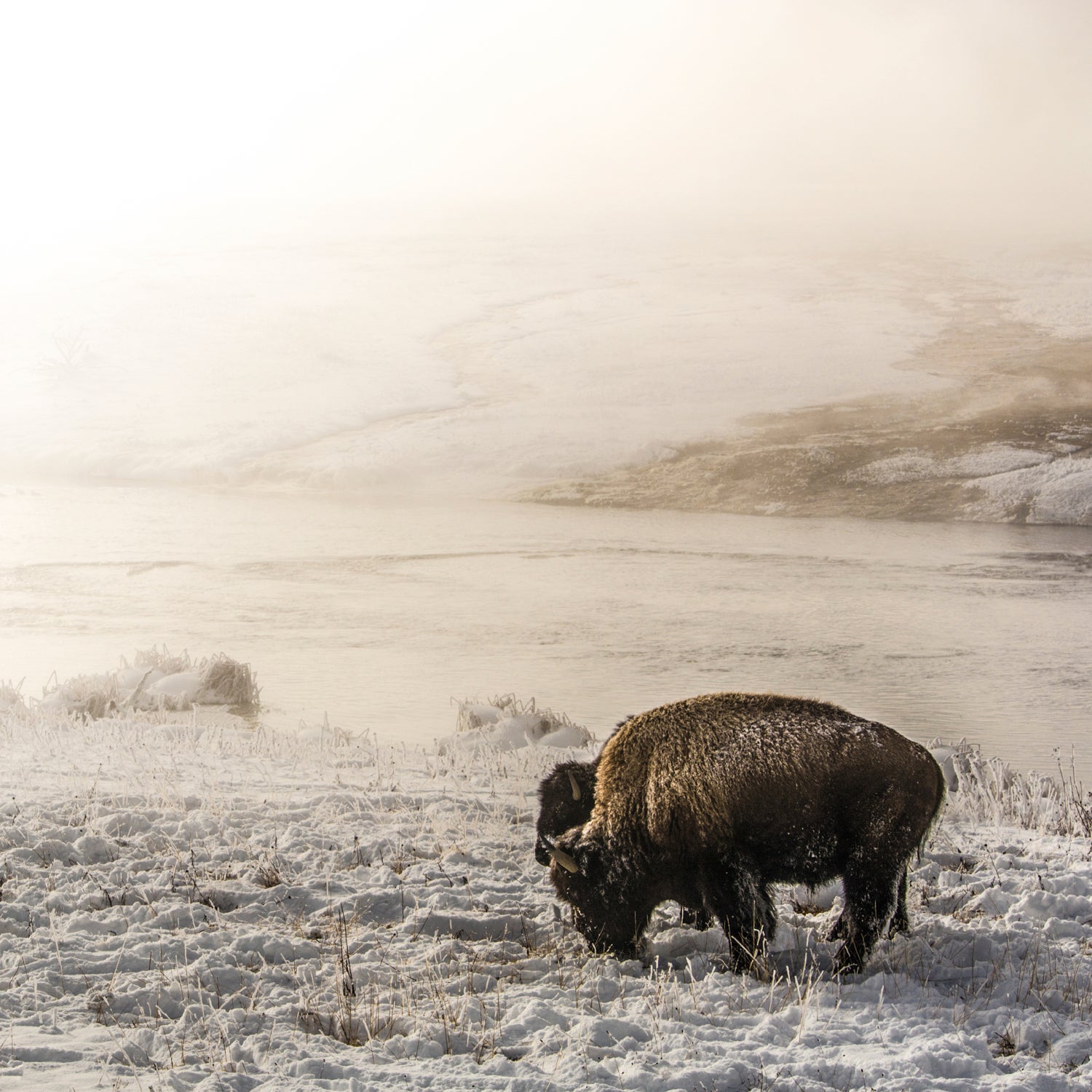Last month, Yellowstone National Park officials announced that as many as 900 wild bison that graze in the park will be killed this winter, either by hunters or slaughter, to offset population growth. The cull has happened periodically since 1908, but this year’s number is the highest since 2008, when 1,726 bison were removed from the park, and the fourth highest of the past 46 years.
Park officials and bison advocates lamented the decision, saying it would be better to give the animals access to more land outside the park or transfer them (alive) to other public or tribal lands. But it’s not so simple. Ranchers oppose such an expansion for bison because female bison can transmit the disease brucellosis to cattle via afterbirth, potentially causing the cows to miscarry and costing ranchers money. There has never been a documented transmission of brucellosis from a bison to a cow, but the two sides view that fact differently: advocates say it's a reason to relax the restraints; the livestock community says it's proof the current system works. “It’s a little like saying your dog’s never gone out of your yard, so why is there a seven-foot fence?” says state veterinarian Marty Zaluski. Doing nothing—neither killing them nor letting them roam—would crowd the park with more bison than what is deemed manageable.
Ranchers and bison advocates have been locked in disagreement for decades, and the yearly cull is the result. But the Montana government may have just broken down a critical barrier between the two sides. In December, Governor Steve Bullock, a Democrat, that bison would get their first swath of year-round habitat outside Yellowstone. The 400 square miles of mostly (96 percent) public land is expected to accommodate hundreds of bison, allowing them to roam and graze freely. In doing so, the state has looped in a third party: hunters.
“It’s a little like saying your dog’s never gone out of your yard, so why is there a seven-foot fence?”
Stakeholders on both sides of the argument agree that an increased hunting harvest is the most ethical way to control the herd’s population.��But it probably won't be enough to offset the need for a cull because hunting is only allowed outside the park and even a stellar harvest might only remove a few hundred more animals. (Hunters killed just over 300 this year.) One thing seems clear, says Jim Stone, executive director of the (ITBC), one of three Native American organizations that work with the government to manage Yellowstone bison: “I think it’s indicative of a change in mindset.”
The decision to open more land to bison could signal that Montana is closer to confronting the heart of the dispute, which is whether these animals are truly “wild.” The label doesn't have any bearing on how the animals are managed on the state level, but it's been a point of controversy since the initial settlement of the American West.��After decades of deadlock, it could be time to open up the bison range and manage issues as they arise, like we would with any other wild species.
As it stands, roughly 4,900 bison live in Yellowstone and they roam in two main herds. They are among the most genetically pure wild bison on earth, meaning they have not cross-bred with cattle, like most bison in the U.S. Perhaps because of that, they tend to survive and reproduce at exceptional rates. Come winter, some of them, including pregnant females, leave the snowy high country to graze at lower altitudes. Usually their migrations lead them into Montana, where they are managed by the state.
Management is necessary to preserve the herds. More than 100 years ago, rampant hunting and poaching left only two dozen bison in the park and nearly eradicated the species from the U.S. It took decades to reestablish the Yellowstone herd. As the species rebounded—numbering into the thousands in the 1980s—management became highly politicized.
Today, in addition to the debate about how much land to allow the bison, there’s dispute about how many bison constitute a healthy population. A 16-year-old management plan on the books—widely considered unscientific—puts the number at 3,000 bison in Yellowstone. Last spring, state and park officials said they were planning to draft a new plan, with more informed objectives. But it could take awhile for the plan to come to fruition, says Rick Wallen, the lead wildlife biologist for bison at . “The first time around, it took 12 years and a few lawsuits,” he says.
Hunting may be the optimal method of population management, but with no guarantee as to how many animals leave the park each year, it remains unreliable.��Often hunters end up with few bison to chase for minimal periods on small swaths of land. “Bison behave just like any other wild species,” Zaluski says. “Where there’s significant hunting pressure, they seek and reside in places where the hunting pressure doesn’t exist.” This, in turn, has led to larger slaughters.
Yellowstone officials identify bison for “transfer” (the preferred term for slaughter) after they wander, or are chased by workers on horseback, into so-called capture facilities on the outskirts of the park. Females, including pregnant ones, are prioritized for removal, while big bulls over the age of three are released, to be hunted later.��Once inside the facility, the bison wait to be picked up, often by the dozen, and driven under armed guard in a semi truck or livestock trailer to a processing plant. There they are killed, gutted, skinned, and butchered, then their skulls, hides, and meat are shipped to one of a handful of reservations that the park service has entered into agreements with to deliver “surplus wildlife,” as Wallen calls the unlucky bison.
The park service does not charge a fee for the animals; organizations like the ITBC and (CSKT) handle the processing and transport for their members, but the recipients must cover the cost. Recipients can range from homes for the elderly or poor to school lunch programs to a hunter who failed to land his own bison that year. A 500-pound bison could cost $750 when all fees are tallied.
It is up to the state of Montana whether to allocate more year-round habitat for bison. With additional habitat, some stakeholders believe hunters could harvest up to 500 animals a year, leaving far fewer, if any, to slaughter.��“It appears that’s the simplest solution, but in 20 years, it’s never happened,” Stone says.
One more new development could play a bigger role than any of the politics. On January 18, the U.S. Department of Agriculture’s (APHIS) removed brucella abortus—the bacterium that causes brucellosis—from its select agents list. Zaluski says this could allow researchers to finally create a more effective vaccine for the disease. (The current vaccine, RB-51, works only marginally well on cattle.) That would weaken ranchers' argument against allowing bison to roam among cattle.
Every other proposed solution—capture, slaughter, quarantine—is designed to minimize bison’s exposure to cows that graze on public land. But with the threat of brucellosis transmission neutralized, Yellowstone bison could finally reach a point where they are not only called wildlife, but treated that way, too.


